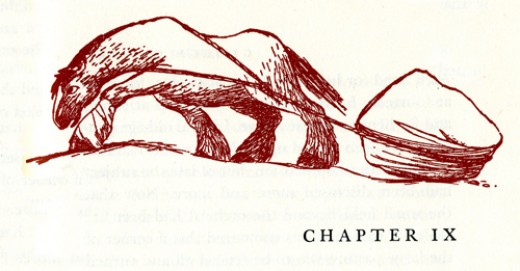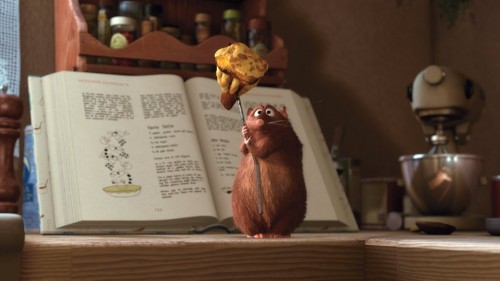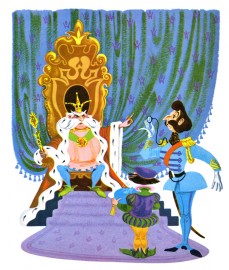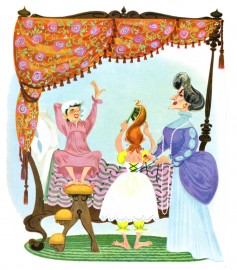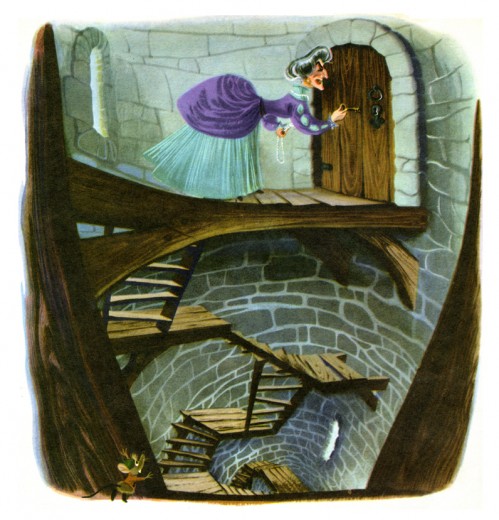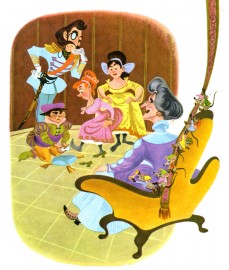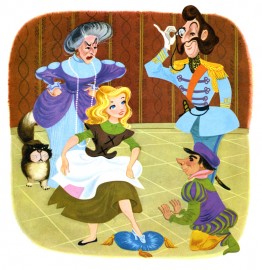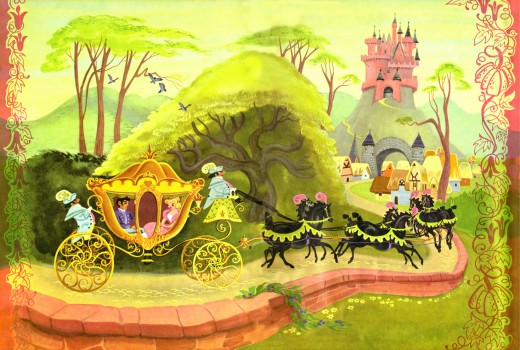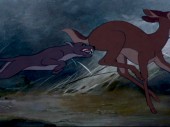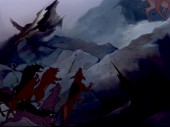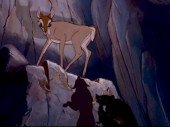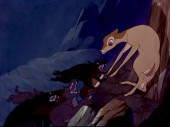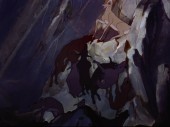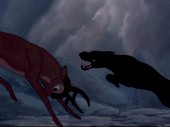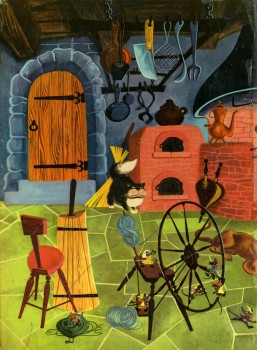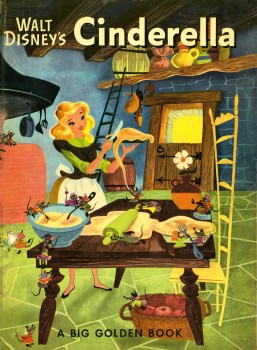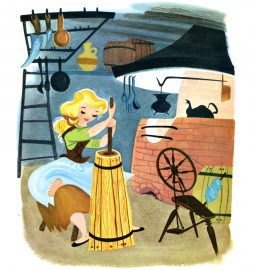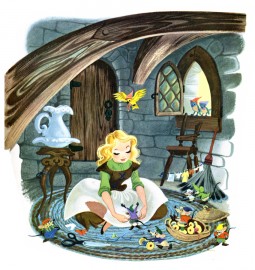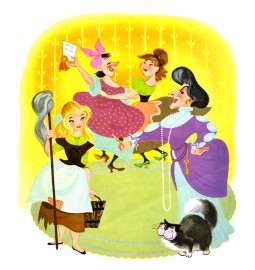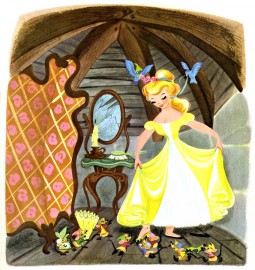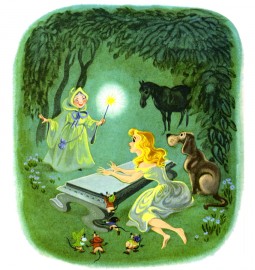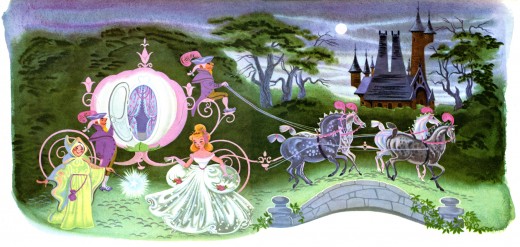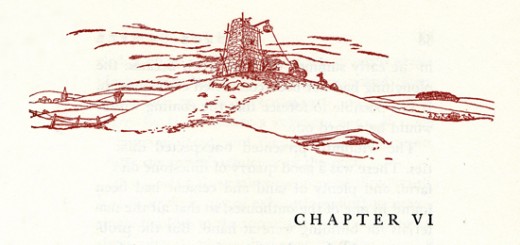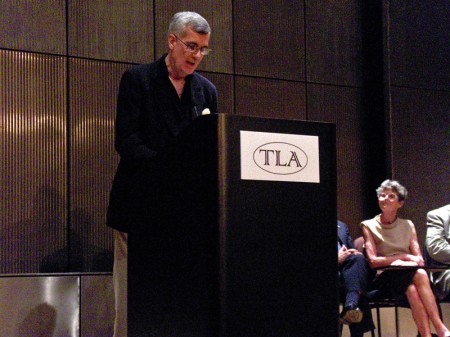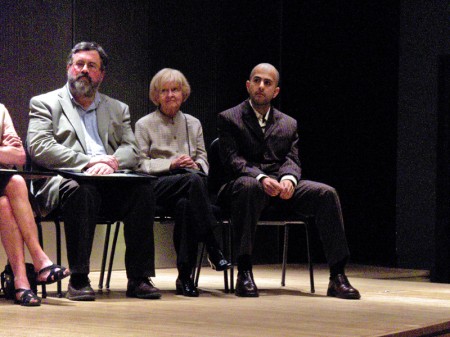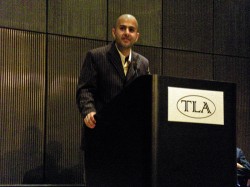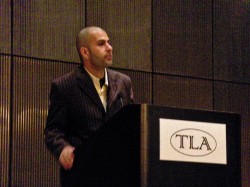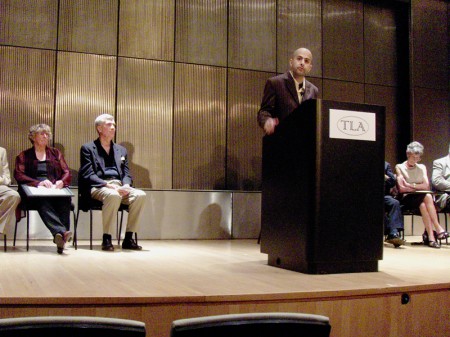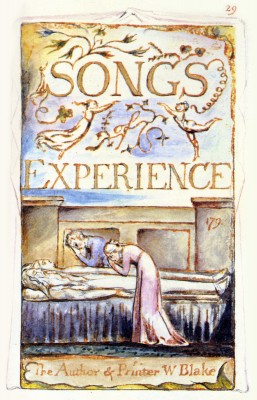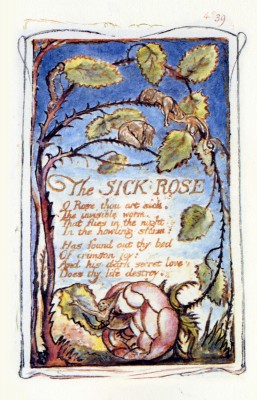Category ArchiveBooks
Animation Artifacts &Books 03 Jul 2007 08:29 am
Illustrated Animal Farm II
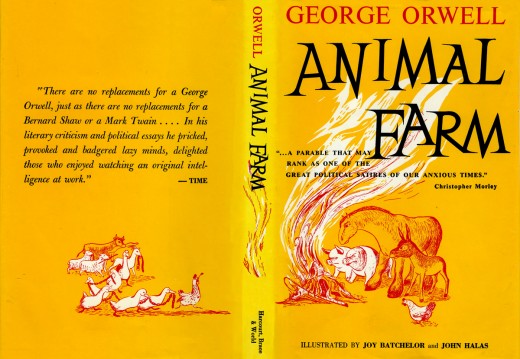 – Here, I continue my posting of the illustrations from a version of George Orwell’s novel, Animal Farm. The drawings are credited to “Joy Batchelor” and “John Halas.” It’s probable that Joy Batchelor did illustrate the book, but I haven’t found evidence as yet. On my last post, Rudy Agresta thought that he remembered Vivien Bachelor discussing her mother’s illustrating it in the book Halas & Batchelor Cartoons. I haven’t found that passage.
– Here, I continue my posting of the illustrations from a version of George Orwell’s novel, Animal Farm. The drawings are credited to “Joy Batchelor” and “John Halas.” It’s probable that Joy Batchelor did illustrate the book, but I haven’t found evidence as yet. On my last post, Rudy Agresta thought that he remembered Vivien Bachelor discussing her mother’s illustrating it in the book Halas & Batchelor Cartoons. I haven’t found that passage.
_______(Click any image to enlarge.)
The animated film was produced by Louis D. Rochemont Associates in 1955 at a studio they set up in Stroud, Gloustershire in England. The studio was formerly the home of the Anson-Dyer company and GB Animation wherein ex-Disney veteran, David Hand, made his short films for Rank.
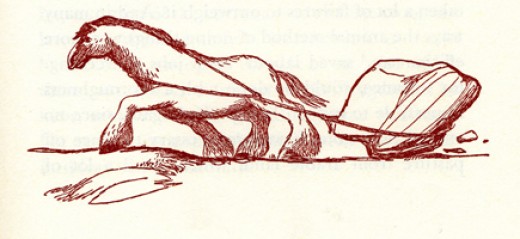
We left off the story with Boxer, the horse, setting an example for the other animals.
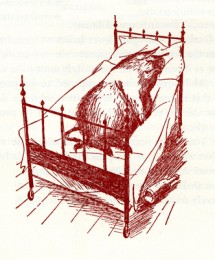
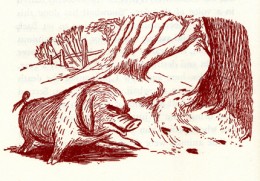
The pigs move into the farmer’s house and become little more than a replacement for “man”.
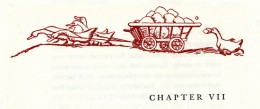
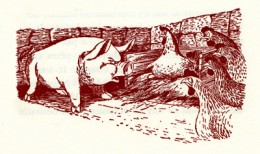
Many animals take the lead of Boxer and try to do their share, while the pigs fight for the lazy leadership.
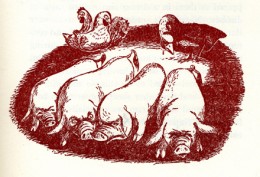

The pigs push Boxer to the limits and use the dogs as their personal guards and force their will on the others.
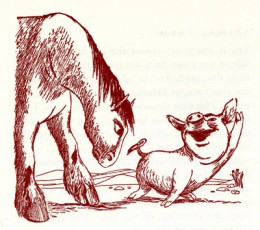
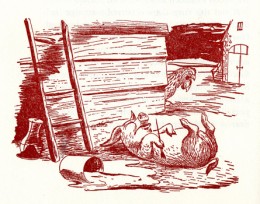
Boxer grows ill as the pigs grow lazier.
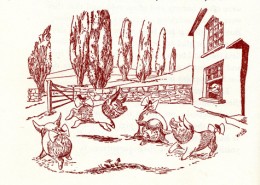
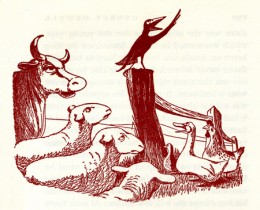
The lazy pigs celebrate their success. Animals hear gossip about the humans planning a charge to take back the farm.
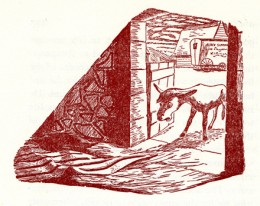
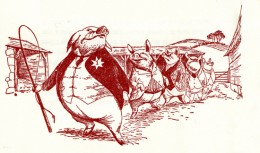
The weakened Boxer, no longer useful to the pigs, is sold for glue.
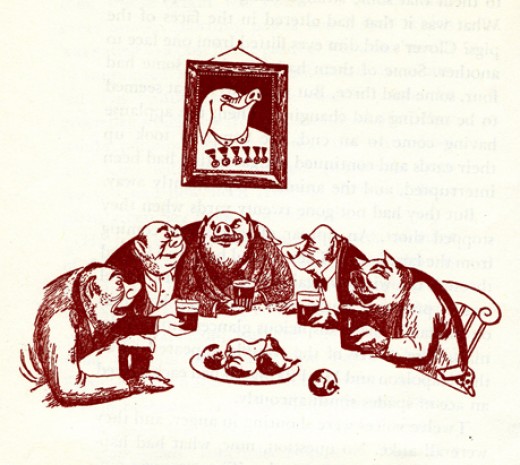
Eventually the humans return, and in some eyes of the animals they blend with the pigs.
The line illustrations do a nice job of representing the film. They’re also quite consistent.
With all the articles and discussions of Ratatouille, there’s an interesting article in today’s NYDaily News by theater critic, Joe Dziemianowicz. He talks about the recent popularity of the dish, ratatouille.
Books &Commentary 27 Jun 2007 07:49 am
NIMH, Bart, Ghibli & other feature thoughts
- First up, in case you haven’t seen this letter, I suggest you check it out. A rejection letter from the Disney studios, 1938.
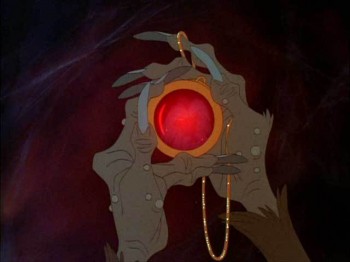 – Monday night The Secret of NIMH aired on cable television. Somehow, even though I own copies of this film on dvd and video, I hadn’t seen it since it opened in theaters. Watching it again, after all these years, I found that not much had changed. 25 years didn’t hurt or help.
– Monday night The Secret of NIMH aired on cable television. Somehow, even though I own copies of this film on dvd and video, I hadn’t seen it since it opened in theaters. Watching it again, after all these years, I found that not much had changed. 25 years didn’t hurt or help.
I have to admit that I was kinder to it for the nostalgia of the piece. The wave of enthusiasm I felt for the “renegades,” who pulled the film together despite the odds of the period working against them, was high.
The film still has that mediocre ending. It’s such a romantic conclusion that it’s almost difficult to watch; magic overcomes everything in this world of Bluth.
Also, I’ve never quite understood the eyes of anyone in the film who’s supposed to be old (and I guess wise) – they just glow so there’re really no eyes there. Somehow the gimmick is corny.
At times the film is so densely colored, but then at other times it’s flat. This flips back and forth from scene to scene. However, this I forgive for a film that was obviously done for a low budget and with a lot of heart.
That Jerry Goldsmith score almost makes the film and all its negatives brilliant. And the voice of Elizabeth Hartman as Mrs. B(F)risby is inspired. It’s quite unique and quirky. This is one of her best performances, and she had many of them.
In the end, I’m glad to have watched it again, but it’s unlikely I’ll rush to view it again in the next few weeks.
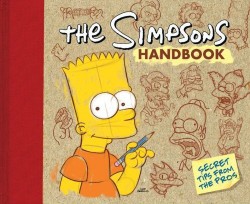 – The NYPost printed a big illustrated review of The Simpson’s Handbook, a new book designed to show you how to draw the characters of The Simpsons. The credited author is Matt Groening.
– The NYPost printed a big illustrated review of The Simpson’s Handbook, a new book designed to show you how to draw the characters of The Simpsons. The credited author is Matt Groening.
The book appears to print model sheets reworked for the general public. Otherwise it seems to be somewhat similar to those Disney How to draw Mickey (or Donald or Goofy or Pluto) books you could get at Disneyland in the 60′s.
The on-line version of the review doesn’t include all those that appeared in the newspaper; some of the illustrations from the book were printed. The images looked interesting though the Post tried to make it look like a fun-for-kids book. I’ll have to check it out when I’m in a book store.
I guess they’re starting to gear up the publicity machine behind the Simpsons feature film about to be released.
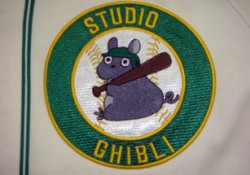 – Daniel Thomas MacInnes hosts an excellent site called Conversations on Ghibli. There, naturally, you’ll find an enormous amount of information on Ghibli, the studio that hosts Miyazaki and his films.
– Daniel Thomas MacInnes hosts an excellent site called Conversations on Ghibli. There, naturally, you’ll find an enormous amount of information on Ghibli, the studio that hosts Miyazaki and his films.
Not only does Daniel Thomas offer extensive current information about the films, but he also posts many, many videos.
Currently there are a number of short films to view on the site. Go there and just start watching.
Three I found breathtaking are:
……..a Yurij Norstein ad: here
……..Miyazaji’s Sky Colored Seed: here
……..Yoshiyuki Momose’s ads for House Foods: here
For those of you who haven’t seen this insurance ad by Sylvain Chomet, maybe it’ll help keep you on hold until his next film appears. It’s already been four years since The Triplettes of Belleville. Making features is a tough business.
- I assume many of you have read Jim Hill‘s article on the potential box office draw for Ratoutille (Rat-a-too-ee). The article sounds like good business sense even if it isn’t the tale we’d all like to hear. I assume we’ll all know the answer by this time next week.
Rants against this article appear at Tom Sito‘s site and at the Animation Guild Blog and at Josh Tyler’s Cinema Blend.
Michael Barrier has a positive review of the film worth reading.
Books &Mary Blair 26 Jun 2007 08:22 am
Retta Scott & Cinderella II
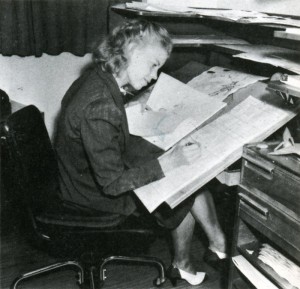 – Here are the remainder of the selections from Retta Scott’s illustrated version of Disney’s Cinderella.
– Here are the remainder of the selections from Retta Scott’s illustrated version of Disney’s Cinderella.
I’m actually curious to know how Western Publishing proceeded with the illustrated Disney books. Apparently a large number of Disney artists contributed to the books – at least in the 40′s & 50′s. Bill Justice, Dick Kelsey, Mary Blair, et al. Then, of course, there are the Golden Books that didn’t have a Disney connection by Disney artists. The Poky Little Puppy by Gustaf Tenggren is, of course, the most famous of these.
(Retta Scott working on Pastoral seq. from Fantasia.
From The Art of Walt Disney by Finch.)
I believe these original illustrations are still on exhibition at the Disneyland Gallery along with others gems from the Little Golden Book series illustrated by Disney artists.
There’s also a new Cinderella book available which uses preproduction art by Mary Blair. This one is NOT a Little Golden Book but comes from Disney Publishing.
Here’s the link to yesterday’s Part I posting, and
some of the remaining illustrations in this book follow:
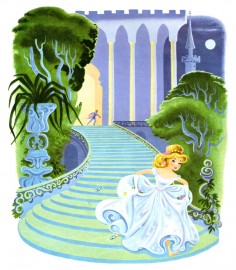 8
8 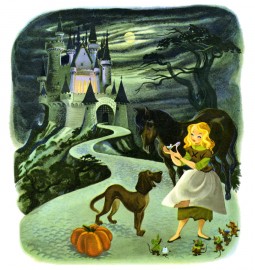 9
9
(Click on any image to enlarge.)
Books &Mary Blair 25 Jun 2007 07:30 am
Retta Scott & Cinderella I
– Retta Scott‘s name was always an intriguing one for me.
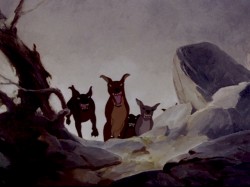 She was an animator on Bambi, Dumbo and Plague Dogs. She was layed off at Disney’s when they hit a slump in 1941 but came back to do a number of Little Golden Books for Disney. The most famous of her books was her version of Cinderella, one which was so successful that it remains in print today as a Little Golden Book.
She was an animator on Bambi, Dumbo and Plague Dogs. She was layed off at Disney’s when they hit a slump in 1941 but came back to do a number of Little Golden Books for Disney. The most famous of her books was her version of Cinderella, one which was so successful that it remains in print today as a Little Golden Book.
When asked why females weren’t animators at the studio, the Nine Old Men who traveled the circuit, back in the 1970′s, often mentioned her. They usually also said that she was one of the most forceful artists at the studio, but her timing always needed some help (meaning from a man.)
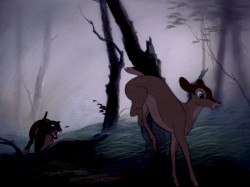 Ms. Scott was known predominantly for her animation in Bambi. Specifically, she’s credited with the sequence where the hunter’s dogs chase Faline to the cliff wall and Bambi is forced to fight them off.
Ms. Scott was known predominantly for her animation in Bambi. Specifically, she’s credited with the sequence where the hunter’s dogs chase Faline to the cliff wall and Bambi is forced to fight them off.
The scene is beautifully staged and, indeed, is forceful in its violent, yet smooth, movement. I was a young student of animation, so this sequence had a long and lasting impression on me.
.
Here are some of her illustrations for Cinderella published in 1950 to tie in with the Disney film. Oddly, the illustrations don’t completely look like the film’s characters. The cat and mice are close, but Cinderella, herself, is very different, less realistic. She looks more like a Mary Blair creation. When I was young, I was convinced that these were preproduction illustrations done for the film. If only.
To do justice to this book, though I’m not posting ALL of the illustrations, I’ll break it into two postings.
Animation Artifacts &Books 21 Jun 2007 07:32 am
Illustrated Animal Farm I
- When the film Animal Farm was released, a tie-in book was published which republished George Orwell‘s novel with line drawings from the film by “Joy Batchelor and John Halas.” I somehow doubt they did the illustrations, but obviously one person within the studio did do the work. It has the look of a single hand.
There are some 35 spot illustrations, so to showcase them all I’ve decided to break this up into two separate postings. Part II will be up next week.
Here’s the first group:

This is the book’s dustcover._________________________ (Click any image to enlarge.)
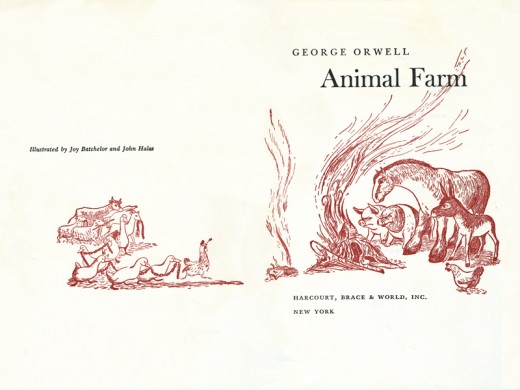
This is the double/title page.
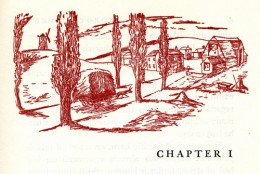
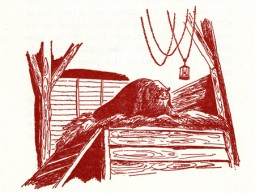
Each chapter has its own heading, and there are usually one to two stills within the body of each chapter.
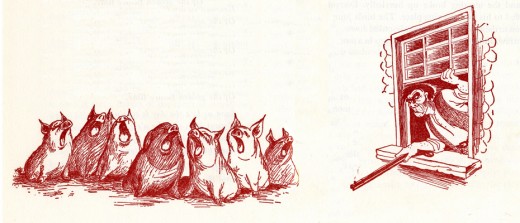
Some of the illustrations, like this one, spread across two pages under the type.
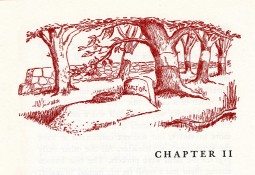
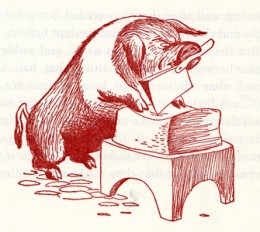
For those of you unfamiliar with this story, it tells the tale of a farm wherein the animals are mistreated.
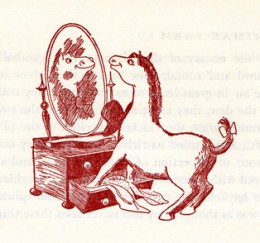
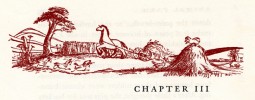
Under the guidance of the pigs, the animals take over the farm and create an animal collective.
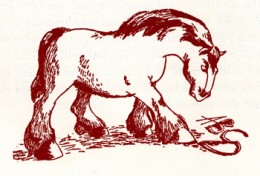
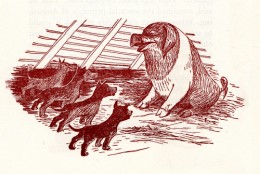
However, the pigs grow lazy and do less of the work as they take charge of the others.
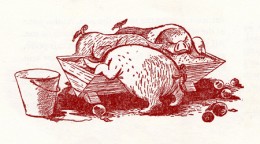
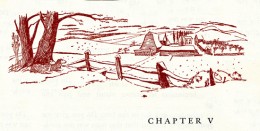
They eat more than their share of the food and mistreat the animals who do the greatest amount of work.
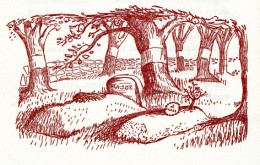
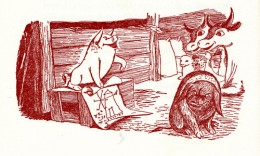
As animals begin to die under the guidance of the lazy pigs, there is some grumbling among the masses.
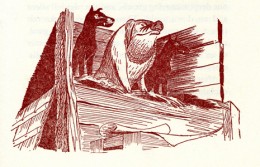
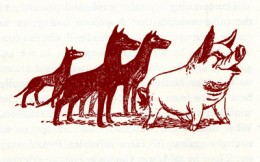
The pigs dominate and rule with a heavy hand.

Boxer, the horse, is the figure of strength and symbolically the real leader of the animals.
You can watch Animal Farm on YouTube by going here.
Books &Commentary 18 Jun 2007 07:43 am
The Animated Man
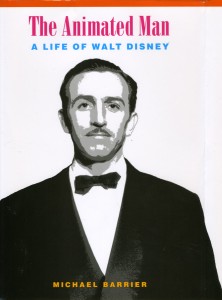 – Michael Barrier‘s The Animated Man: A Life of Walt Disney is unlike any other Disney biography I’ve read. (Since I think I’ve read about 90% of them, that’s quite a statement for me.)
– Michael Barrier‘s The Animated Man: A Life of Walt Disney is unlike any other Disney biography I’ve read. (Since I think I’ve read about 90% of them, that’s quite a statement for me.)
On my initial reading of the first half, I was ready to proclaim the book one of the finest animation books ever written. All the information on Disney’s developing studio in the 20’s, the backstabbing, deal making, and filmmaking was so well organized, detailed and well developed in the book that it was crystal clear where, why and how Disney was pushing his organization to a larger state. Where else have we read that the Disney brothers were HAPPY when Ub Iwerks left?
The story gets even more intense as Snow White grew to completion. We learn about the budget developments, the artistic growth within the studio and the push to meet the final screening. Where else have we read that the final bank loan from BankAmerica wasn’t a make or break it deal, that the studio would NOT go bankrupt if they didn’t get it. And they knew in advance that they were going to get it!
Walt Disney seems to get somewhat confused after the successful opening of Snow White and the large amounts of money that came back to the studio. Prior to this, I had always thought Pinocchio, Bambi et al were well into production as Snow White came to an end, so that there was a smooth transition from the first feature into the line-up of others. But, no. There was a lot of confusion within the studio as productions got switched and development turns from one to another.
Apparently Disney was a restless guy. A revealing comparison between Walt and his father is made, a man who seemed to go from one career to another so wildly in those early years that, prior to this book, I often wondered if everyone was like that at the turn of the 20th Century. I came to realize that these two guys had much in common and were unlike many others of their time.
In many ways it reminds me of something in the Ub Iwerks biography, The Hand Behind the Mouse, by John Kenworthy & Linda Iwerks. That book states that Iwerks felt that once he mastered something, he moved on. He bowled obsessively until he hit a perfect score, 300; then he never bowled again. In some ways it seems as if this were also true of Walt Disney. Once he did something, he moved onto something bigger and more challenging.
The restlessness shows in Disney’s split interest in the features that immediately followed Snow White. The attempts to make money had them thinking about live action from the 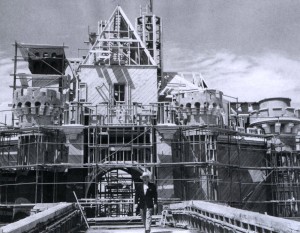 earliest days. I don’t think anyone has written before about this atmosphere from Disney’s point of view.
earliest days. I don’t think anyone has written before about this atmosphere from Disney’s point of view.
The book goes from the Strike to the War to Live Action. Slowly the interest in animation wanes, and the book puts its attention on the aspects of Disney’s world that HE was interested in. When his all-consuming passion shifts away from animation to live action, to the theme parks, to city construction and planning, the book follows this, almost exclusively.
(Images from the book enlarge when clicked.)
This is where it becomes less an animation book – possibly the best animation writing done on Disney, it’s so informative – to the Biography we expected. However, there’s as much detail about Disneyland or EPCOT from Disney’s point of view as there was about animation.
It’s so thoroughly researched that you feel confident that the picture you’re reading is undoubtedly accurate.
For the first half of this book, this is an animator’s version of Disney. The biography we always wanted. When Disney loses interest in animation, the book seems to shift as well, and it should. The true-life adventure films, for example, get more attention than Lady
and the Tramp, which is barely mentioned. In a biography of Disney this is probably appropriate, but as an animation die-hard this is my interest, and consequently the problems with the book, for the most part, are my fault. I got so much about animation at the beginning that I hoped for more later on.
I also wanted more about some of the personal aspects of Disney’s life. I expected, for example, to read more about the death of Disney’s mother; it seems so briefly tossed out in one paragraph I was struck, surprised, at how little attention was given to her accidental death. Disney must have felt guilt over her death when the new home built by the two sons had a faulty gas tank, and she died of asphyxiation, yet so little about it is explored (with a footnote advising us to go to a Bob Thomas book if we’re looking for more detail.)
This made me assume, once I hit this point, that the book was more interested in Disney the entrepreneur/businessman than in Disney the son/husband/father. The private side of Disney, I understand, was less about his personal side than his work. No vacation went without work, no lunch or private conference on the polo field went without discussion of Disney’s interest. The man didn’t have much of a personal life, so I understand the choice.
The focus stays firmly fixed on Walt Disney, the artist. It’s a unique read and one I’ll undoubtedly reread. There’s so much material and so much of it original research and commentary that, oddly, one almost wants more.
The book presents a man who helped to shape the first half of the 20th Century. It wasn’t just in his animation or his live action or his theme park development. It was in all of them, the man who was behind them all. The book offers this man with all of his pluses and minuses with hard-nosed information rather than stories, conjecture or rumor.
Barrier is a treasure among animation writers. His facts are indisputable, his information so all-enveloping, his toughts well-honed and at the top of the game. He’s written an excellent book; one that absolutely engrossed me and, at the same time, challenged me. I recommend it wholeheartedly (in case you couldn’t tell.) With half the number of pages of Neal Gabler‘s recent book, Michael Barrier gives us so much more.
Books 12 Jun 2007 08:00 am
Tony Goes Flying
- Tony Eastman is one of New York’s animation jewels. He’s been an animator/director for as long as I can remember. He’s produced animation films and animated for others. He’s aslo worked with me on a couple of projects; he’s quite a talent with a sensitive style and a smile in his work.
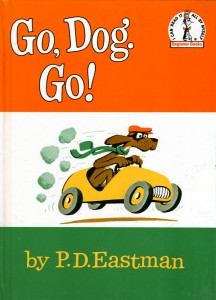 Tony is the son of Phil Eastman. We animation people know him as the co-author with John Hubley of Brotherhood of Man, one of the films that started UPA. To quote the introduction to the published script:
Tony is the son of Phil Eastman. We animation people know him as the co-author with John Hubley of Brotherhood of Man, one of the films that started UPA. To quote the introduction to the published script:
- THE SCRIPT of Brotherhood of Man and the illustrations from that animated cartoon are essentially an end product of a pamphlet called Races of Mankind which was written in 1943 by Drs. Ruth Benedict and Gene Weltfish, anthropologists of Columbia University. It was designed for presentation to men of the armed forces as an antidote to racial prejudice. This film has been made by United Film Productions at the instance of the UAW-CIO.
However, Phil Eastman as P.D. Eastman is known to the rest of the world as the genius behind all those early-reader books for young kids which were published by Random House.
Likewise, Tony Eastman is following in his father’s footseps using the name
Peter Eastman for the children’s books he is authoring. 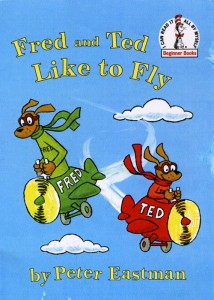
This is to celebrate his newest book which just hit the market: Fred and Ted Like To Fly, the follow up to his successful book, Fred and Ted Go Camping.
Beginner books are particularly difficult to do in that the vocabularly is more limited, the stories are simpler, and it takes enormous creativity to keep them smart and sharp. I very much like the twists that Peter “Tony” Eastman has taken to the form and feel that he has taken the scepter left behind by his father, and brought it to new heights.
It looks like Dr. Seuss, who is probably more popular than even in his lifetime, has some serious competition. Are these characters going to transfer to animation anytime soon?
Congratulations to Tony. He deserves some great success with these new children’s classics he’s writing.
- Speaking of books, I’ve always enjoyed it when authors review other authors’ works. Give me John Updike reviewing any book in the New Yorker, and I’m ready to fly. When animators write books there’s often something special going on. Recently, I’ve read two such reviews of Mike Barrier’s new book, The Animated Man: A life of Walt Disney.
John Canemaker has an interesting review about to be published in Print Magazine. It’s quite astute and an in depth evaluation. It’s only available in print editions, so look for it to hit the newsstands soon.
David Levy, ASIFA East‘s President has a column in the new newsletter sent out to members. This hasn’t yet appeared on the ASIFA East website (I’m sure it will soon.) However, David gave me permission to post it here. Since I think he has some intelligent comments to make I’m pleased to showcase it.
 A life of Walt Disney by David Levy
A life of Walt Disney by David Levy
- I’ve read a handful of biographies on Walt Disney over the years, and I can say with certainty that Michael Barrier‘s new book, The Animated Man: A life of Walt Disney (University of California Press) is the very best. Although the book is laden with quotes pulled from interviews with those who knew and worked with Walt, the anchor of the book is Barrier’s research based conclusions. The author pulls much of his best information from official documented studio notes taken from meetings that demonstrate Disney’s role in shaping his studio’s art.
Here are just some of the book’s many revelations that just about blew me away.
1. The reality that Oswald The Lucky Rabbit, Disney’s pre-Mickey character series, was not a project born of inspiration. In fact, Universal ordered the series by description, asking for a rabbit character named Oswald the Lucky Rabbit. As Barrier tells it, Disney arrived back at his studio with the news that his crew would be switching production from Alice to Oswald. It reminded me of a factory switching product manufacturing based on a new order, which in essense, is what it was.
2. The idea that departure of Ub Iwerks from Disney was actually a plus and a necessary incident in the development of animation at the Disney studio.
3. The fact that little or nothing in Disney’s early pre-Mickey Mouse’s history shows any evidence that he would become the artist/industry leader that he became. Disney’s early works are as crude and filled with short cuts as any other silent era animation producer.
4. Disney features from Cinderella onwards were no longer pre-scored beyond song sequences. For exam ple, in an early feature such as Pinocchio, the music that accompanied Jiminy Cricket’s dash across the street would be pre scored, in other words, written and recorded before any animation was done.
The story artist, sequence director, and lead animator would work with the track and the resulting animation was connected to the sound track in a ay that could not be achieved by post scoring the animation. Scoring a film after the picture is complete is the way live action films are made and that is one of the reasons why all the Disney features from Cinderella through Jungle Book are a far less rich experience.
5. The suggestion that the two Disney feature films that assigned animators to characters the way actors are cast as characters were all
the more better because of it. For evidence, seek out Fred Moore‘s seven dwarf animation and Bill Tytla‘s animation of Dumbo and his mother.
6. The way Barrier connects how Disney’s passions for trains and miniatures paved the way towards his creation of Disneyland. Talk about productive hobbies! Finally, a key theme of the book is that the animation breakthroughs leading up to and including Snow White and the Seven Dwarfs did not really lead the Disney artists beyond that. In a form of arrested development, key animation innovators such as Tytla, Babbit, Ferguson, and Moore, were all replaced by younger higher-quality draftsman, Nine of which, would become the fabled “Nine old men”. While the draftsmanship improved under the Nine old men, a life-sucking literalness also crept into the animation. Each of us can decide for themselves if what was gained was worth more than what was lost. But, of course, nothing is really ever lost, just possibly a sleep for a while (Just like Snow White, herself). Pick up this book today! It’s your summer read.
And, if you just can’t get enough Michael Barrier, check out his great Web site: www.michaelbarrier.com. I also highly recommend his terrific commentaries on the four Warner Brothers cartoon DVD collections.
Personally, I’m just about creeping up to the end of the book. As soon as I do, I’ll give some comments of my own which certainly won’t be as observant or as articulate. Thanks to David Levy for allowing me to reprint this. It should also appear on the ASIFA East site soon.
Books 02 Jun 2007 09:52 am
Amid gets Award
- Yesterday I went to the Theater Library Association Awards. Amid Amid was being presented with his award for “Outstanding Book in the Area of Film or Broadcasting.”
The award, of course, is for Amid’s excellent book Cartoon Modern. 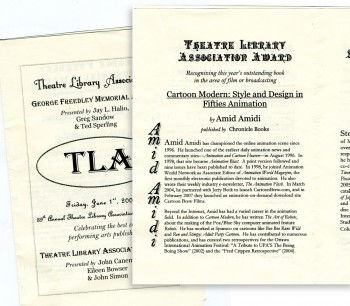
There were a number of excellent presenters giving awards to what, I presume, are excellent books. Noted critic, John Simon, gave an award to Birgitta Steene for her extensive biography on Ingmar Bergman.
Ex-film curator, Eileen Bowser, gave a Special Jury Prize to Steven Higgins (who replaced Eileen at the Museum of Modern Art) for his book Still Moving, a study of stills in MOMA’s collection. John Canemaker pre-sented the award to Amid.
(Click any image to enlarge.)
In all there were about half a dozen awards, and a dozen speeches. They were all gracious and polite, though, appropriately enough, John Simon turned the audience around with a couple of backhanded slaps. His was the most glowing and enormous praise for the book, but he admitted to not having read more than 1/4 of it as yet. (The book is a reference guide, almost 1200 pages long, so it would be hard reading.)
John’s speech offered a good introduction to Amid’s varied work and fine praise for the excellent book. Amid’s speech was short, with a funny anecdote, and polite thanks to those at TLA who supported him.
Howard Beckerman sat next to me, and it was good to see him again. It’s amazing how infrequently I meet up with many of the old friends I have in animation. This makes it even more special when I do.
John, Amid and I went to eat at a good Chinese Restaurant after the champagne toast the TLA offered.
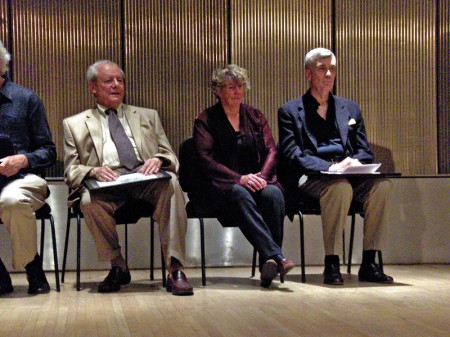
L to R: John Simon, Birgitta Steene, John Canemaker listen to
the opening remarks by TLA Book Awards Chair, Richard Wall. John Canemaker introduces Amid. Amid listens to his intro.
Books &Puppet Animation &Trnka 29 May 2007 08:05 am
3D Puppet Book Corner
I’ve written about a lot of books on 2D animation, but I also love 3D puppet animation and have a small collection of books on the subject.
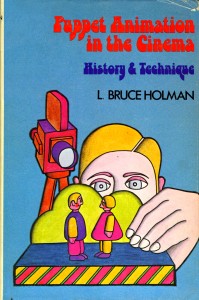 – Bruce L. Holman’s book, Puppet Animation in the Cinema: History and Technique was originally published in 1975 and can only be located today in old book bins (meaning Amazon or ebay). It’s a real primer on the medium, and when it was published was the only one of its kind.
– Bruce L. Holman’s book, Puppet Animation in the Cinema: History and Technique was originally published in 1975 and can only be located today in old book bins (meaning Amazon or ebay). It’s a real primer on the medium, and when it was published was the only one of its kind.
The book does exactly what its title says, it gives a history of the form and tells how the films are made. There are photos of a lot of European puppetmakers and stills from their films. I think David Allen is the only important American who makes it into the book. But then, at the time, that’s pretty much what the landscape described. Loving Jiri Trnka, as I do, I was quite pleased to see quite a bit of space devoted to him, and, of course, that’s as it should have been at the time.
The book stood on its own for quite some time, and those of us who love puppet films loved this book.
_____________
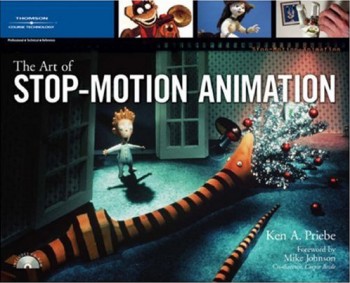 – Another book that you CAN get your hands on is Ken Priebe‘s The Art of Stop-Motion Animation. It brings things more current clearly explaining how puppet films are made, how to construct puppets of your own and how to make films of these puppets. There’s also a chapter on the history of the medium.
– Another book that you CAN get your hands on is Ken Priebe‘s The Art of Stop-Motion Animation. It brings things more current clearly explaining how puppet films are made, how to construct puppets of your own and how to make films of these puppets. There’s also a chapter on the history of the medium.
It’s a real nuts-and-bolts book that gives a clear demonstration of the process and a commendable how-to approach.
It’s obvious that Priebe loves puppetry and invests that love in the writing. This is a good book for anyone thinking of trying the medium and/or making a living of it.
_____________
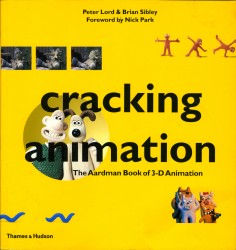 – Because the market for this medium is slim, there are a number of excellent books about the medium which exist to promote filmmakers. One such book is Cracking Animation by Peter Lord and Brian Sibley; it’s the story of Aardman and the making of their 3D animation. It’s amazing how many animation books Sibley has been connected to.
– Because the market for this medium is slim, there are a number of excellent books about the medium which exist to promote filmmakers. One such book is Cracking Animation by Peter Lord and Brian Sibley; it’s the story of Aardman and the making of their 3D animation. It’s amazing how many animation books Sibley has been connected to.
The book goes into nice depth in illustrating the history of 3D animation and moves from there to show how the Aardman puppet films are made. Nice illustrations show all of the phases with lots of stills of armatures, walk cycles, sets and animators. It’s a solid book with a lot of information. I believe later editions of the book have been updated to feature more recent films.
Of course, it’s Aardman-centric, but that’s not such a bad thing.
_____________
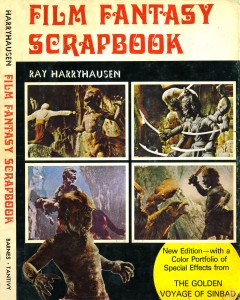 – Another book that puts its focus on one individual is this Film Fantasy Scrapbook by Ray Harryhausen.
– Another book that puts its focus on one individual is this Film Fantasy Scrapbook by Ray Harryhausen.
Of course, Harryhausen is the “auteur” who created all those stop motion monsters and sci-fantasy films. (Anyone who has seen Jason and the Argonauts can only remember those incredible fighting skeletons.) This book is literally a scrapbook of stills and posters and illustrations showing off Harryhausen’s career up to 1972, when the book was published.
It’s all in B&W and one wishes there were more back stage imagery as you see in the Aardman book. It’s really more of a “fanzine” type book, but if you’re at all a Harryhausen fan, you’d love owning the book.
Harryhausen has written a number of other books about his film work. I don’t own any, but The Art of Ray Harryhausen looks like it might be good. Unfortunately I was never a wildly enthusiastic fan of this type of special effects animation, so I haven’t gone wild over his books. The only reason I include this book here is that you can’t mention 3D animation without referencing Harryhausen.
_____________
- Finally, let me showcase the book The Corpse Bride: An Invitation to the Wedding by 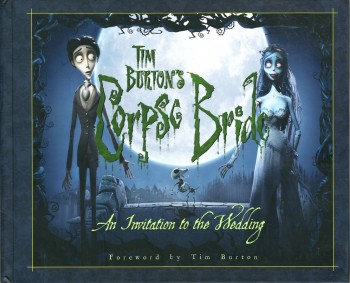 Mark Salisbury.
Mark Salisbury.
This is an out-and-out promotional book for the film. However, it really gives a state-of-the-art demo to show how studio puppet films are made. The book includes lots of backstage photos which go into detail about how certain scenes were created. This is a variant on the excellent book done to promote The Nightmare Before Christmas.
We’re shown how some scenes combined 3D puppets with 3D cgi (a technique all puppet animation films include these days.) The details of the odd digital photography are explained fully and illustrated in detail.
Considering the obvious devotion Tim Burton seems to have for 3D puppet animation, it’s worth watching closely. Having made Vincent, Nightmare Before Christmas, The Corpse Bride and, now in production, 9 Burton has become one of the most important advocates of the medium.
Art Art &Books 16 May 2007 12:22 pm
Blake’s Nov. B’day
.
– Well, it’s poetry time, boys and girls.
One of my most memorable trips to a museum was a visit to the Tate in London where I got to see the original paintings by William Blake. I’d been an admirer of his work ever since I’d learned about it. I have to admit I knew him as a poet before I realized he’d painted his work.
This is the 250th anniversary of his birth (Nov. 28, 1757) and many commemorative celebrations are planned. Let’s start things off by posting a couple of the works from The Songs of Innocence and Experience.
I’ve chosen Songs of Experience.
.
.
.
.
.
. . . . . . . . The Sick Rose
. . . . . . . . O Rose Thou Art Sick.
. . . . . . . . The invisible worm,
. . . . . . . . That flies in the night
. . . . . . . . In the howling storm:
. . . . . . . . Has found out thy bed
. . . . . . . . Of crimson joy:
. . . . . . . . And his dark secret love
. . . . . . . . Does thy life destroy.
.
.
.
.
.
.
.
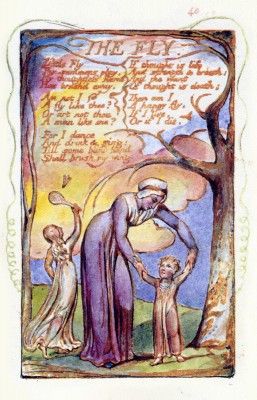 . . . . . . . . The Little Fly
. . . . . . . . The Little Fly
. . . . . . . . Little Fly
. . . . . . . . Thy summers play
. . . . . . . . My thoughtless hand
. . . . . . . . Has brush’d away.
. . . . . . . . Am not I
. . . . . . . . A fly like thee?
. . . . . . . . Or art not thou
. . . . . . . . A man like me?
. . . . . . . . For I dance
. . . . . . . . And drink and sing;
. . . . . . . . Till some blind hand
. . . . . . . . Shall brush my wing.
. . . . . . . . If thought is life
. . . . . . . .And strength and breath;
. . . . . . . . And the want
. . . . . . . . Of thought is death;
. . . . . . . . Then am I
. . . . . . . . A happy fly,
. . . . . . . . If I live
. . . . . . . . Or if I die..
.
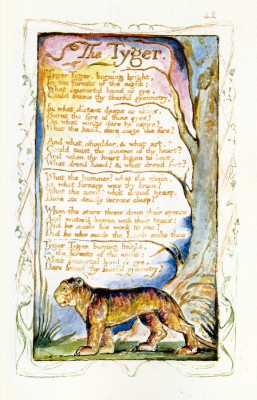 . . . . The Tyger
. . . . The Tyger
. . . .Tyger Tyger, burning bright.
. . . .In the forests of the night;
. . . .What immortal hand or eye
. . . .Could frame thy fearful symmetry?
. . . .In what distant deeps or skies.
. . . .Burnt the fire of thine eyes?
. . . .On what wings dare he aspire?
. . . .What the hand dare sieze the fire?
. . . .And what shoulder & what art,
. . . .Could twist the sinews of thy heart?
. . . .And when thy heart began to beat,
. . . .What dread hand? & what dread feet?
. . . .What the hammer? what the chain,
. . . .In what furnace was thy brain?
. . . .What the anvil? what dread grasp,
. . . .Dare its deadly terrors clasp?
. . . .When the stars threw down their spears
. . . .And water’d heaven with their tears;
. . . .Did he smile his work to see?
. . . .Did he who made the Lamb make thee?
. . . .Tyger Tyger, burning bright.
. . . .In the forests of the night;
. . . .What immortal hand or eye
. . . .Could frame thy fearful symmetry?
